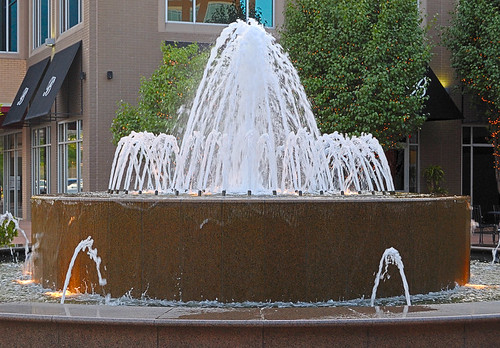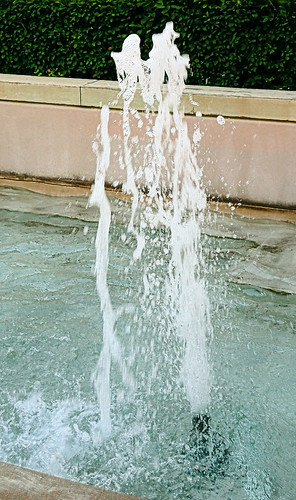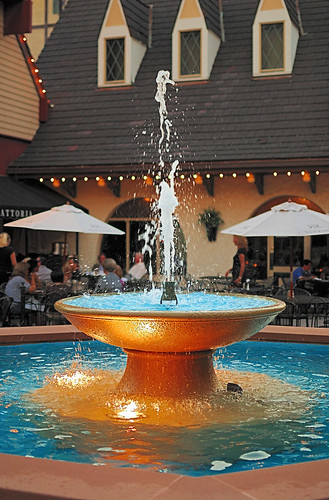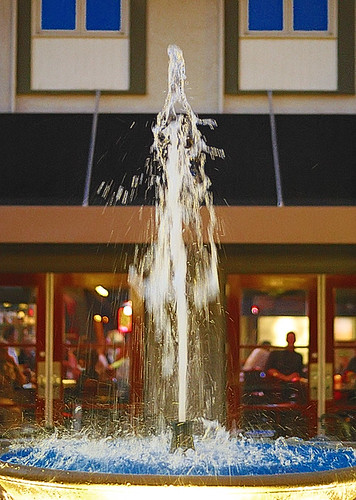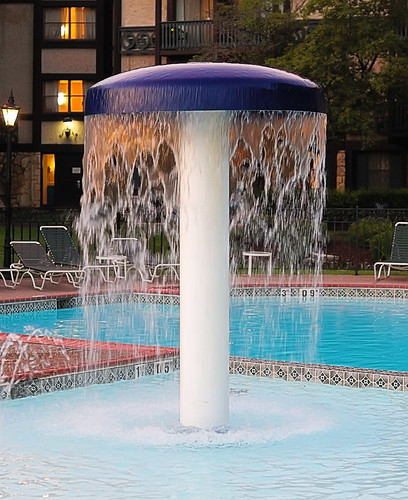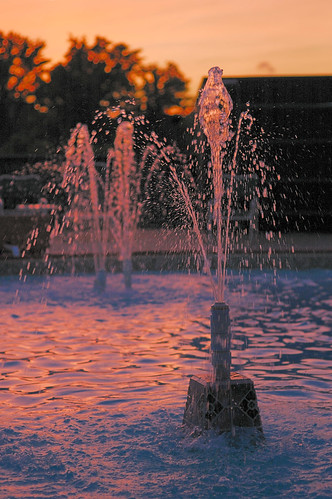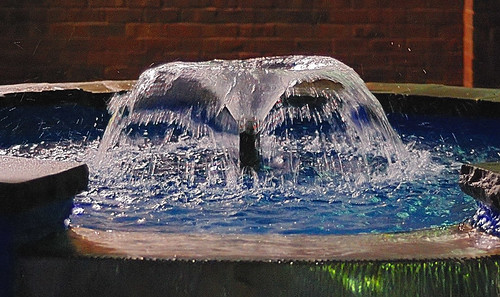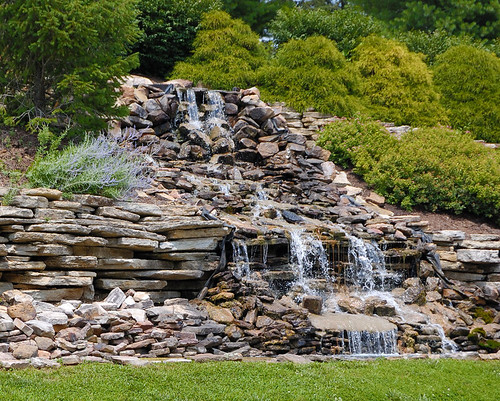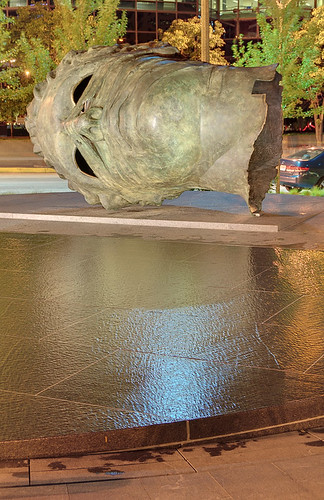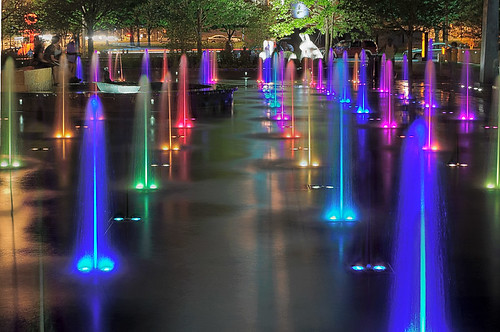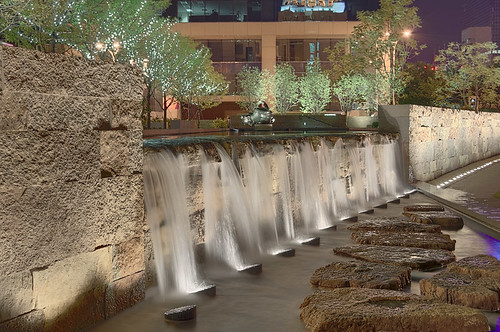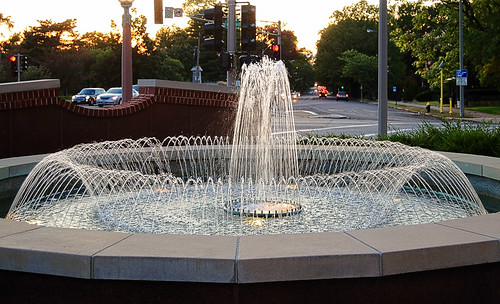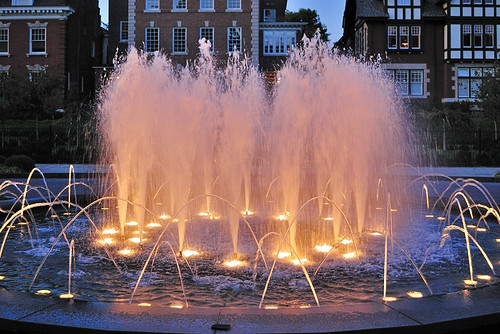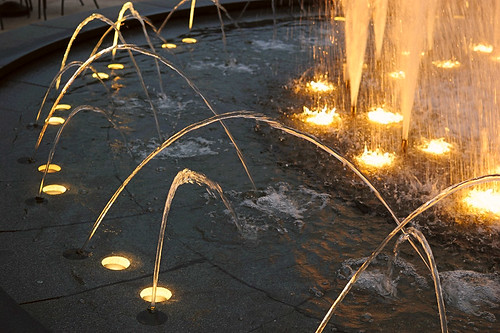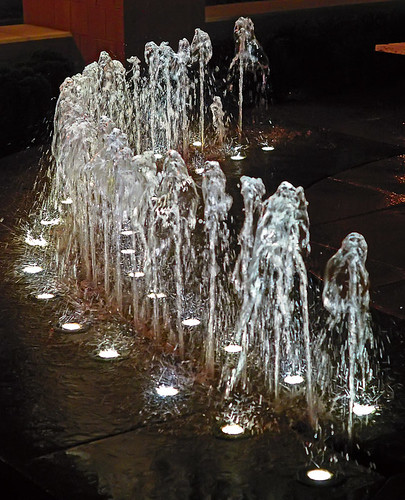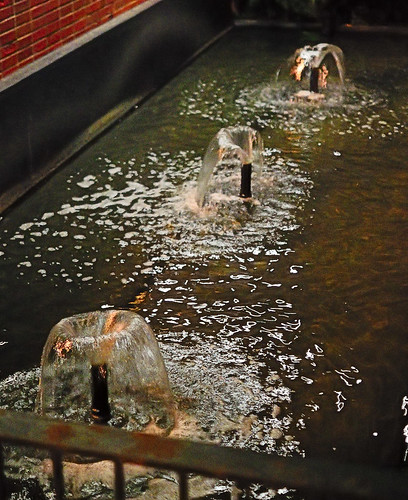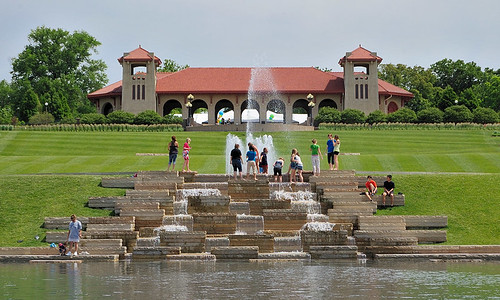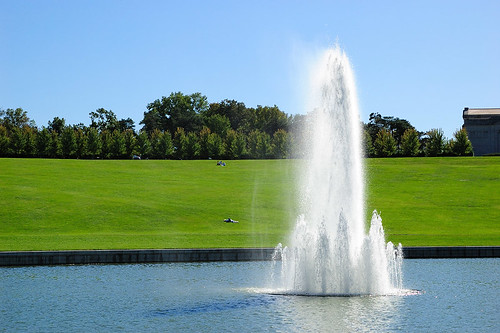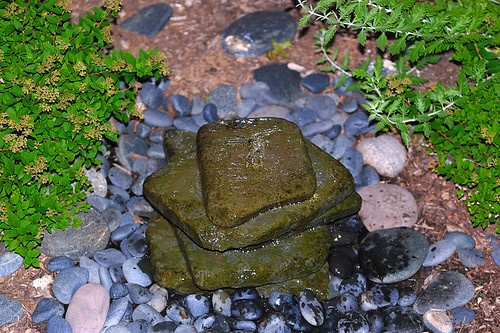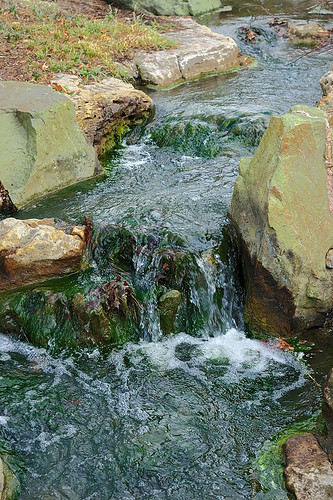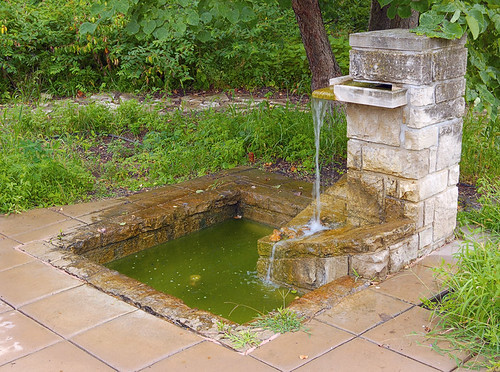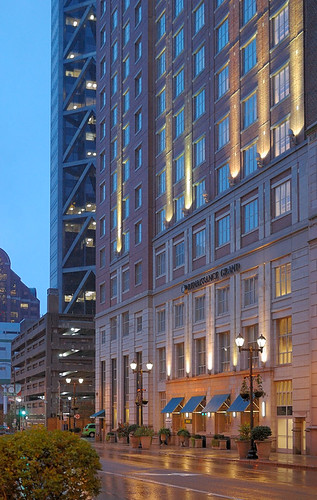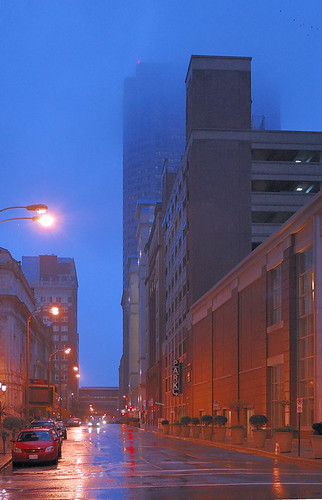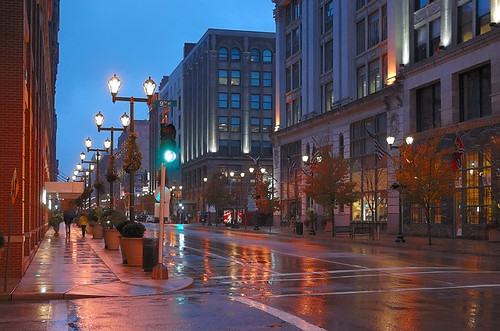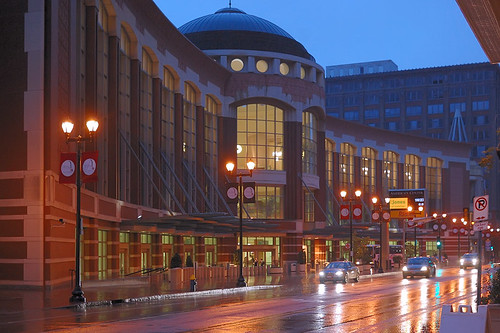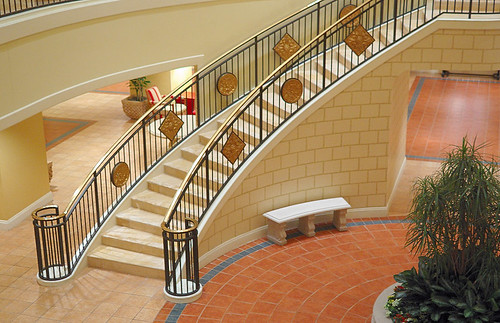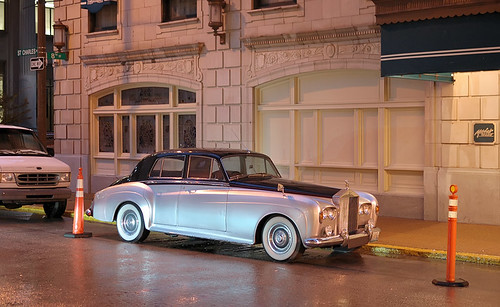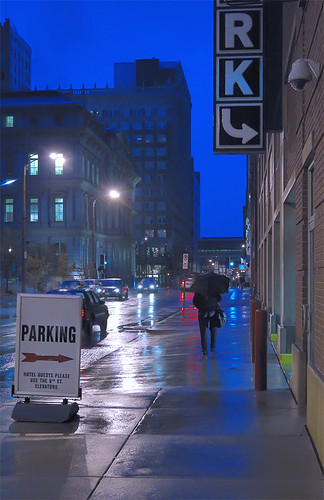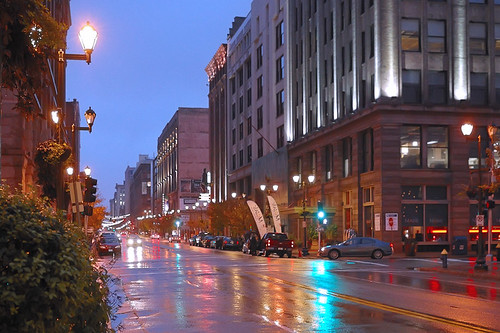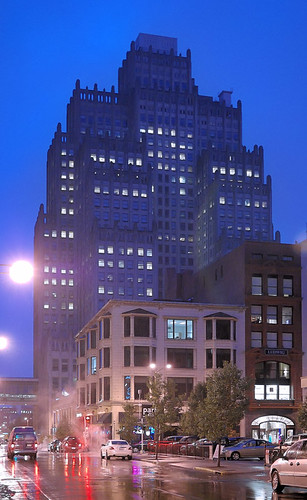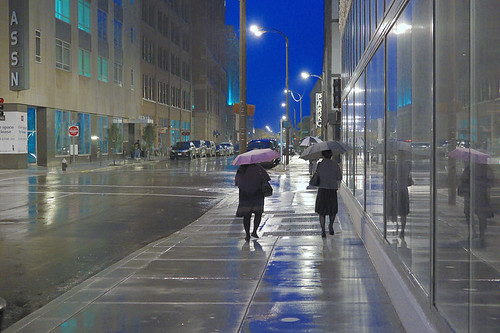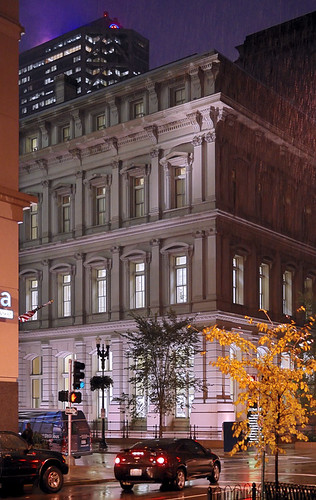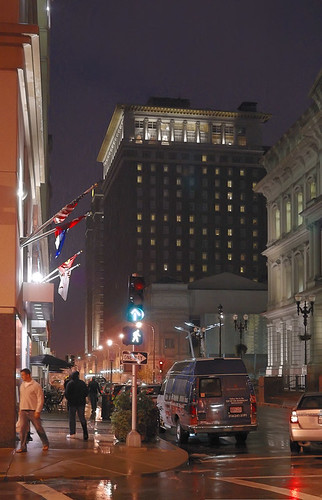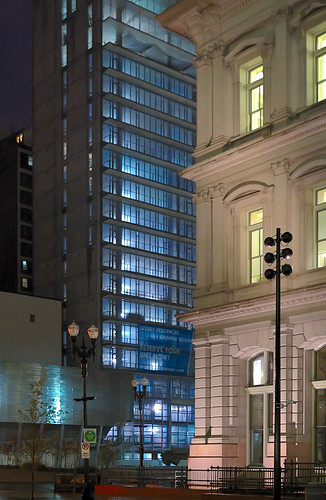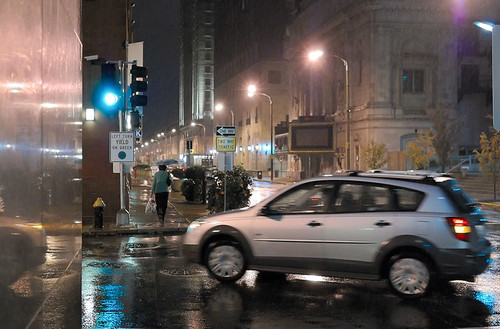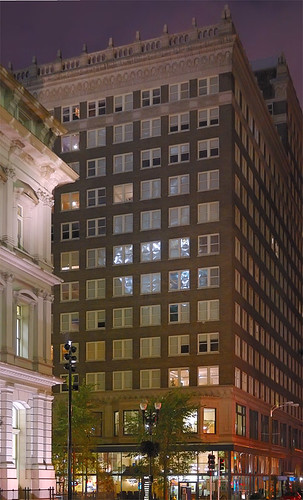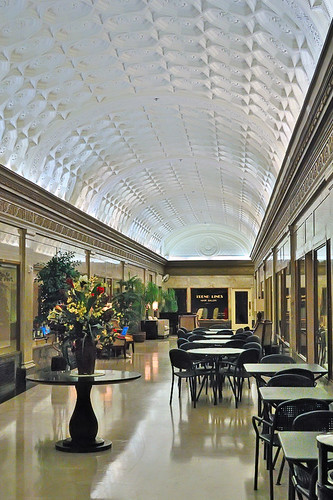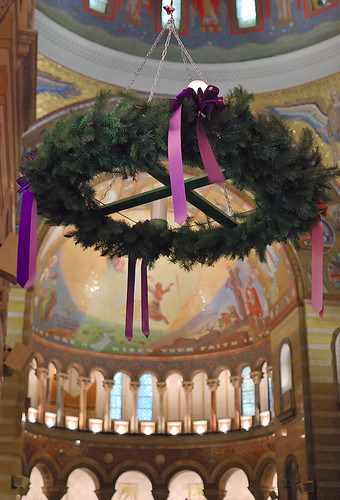
Advent wreath, at the Cathedral Basilica of Saint Louis.
| CONDITOR alme siderum, aeterna lux credentium, Christe, redemptor omnium, exaudi preces supplicum. | CREATOR of the stars of night, Thy people's everlasting light, Jesu, Redeemer, save us all, and hear Thy servants when they call. |
| Qui condolens interitu mortis perire saeculum, salvasti mundum languidum, donans reis remedium, | Thou, grieving that the ancient curse should doom to death a universe, hast found the medicine, full of grace, to save and heal a ruined race. |
| Vergente mundi vespere, uti sponsus de thalamo, egressus honestissima Virginis matris clausula. | Thou camest, the Bridegroom of the Bride, as drew the world to evening tide, proceeding from a virgin shrine, the spotless Victim all divine. |
| Cuius forti potentiae genu curvantur omnia; caelestia, terrestria nutu fatentur subdita. | At whose dread Name, majestic now, all knees must bend, all hearts must bow; and things celestial Thee shall own, and things terrestrial Lord alone. |
| Te, Sancte, fide quaesumus, venture iudex saeculi, conserva nos in tempore hostis a telo perfidi. | O Thou whose coming is with dread, to judge and doom the quick and dead, preserve us, while we dwell below, from every insult of the foe. |
| Sit, Christe, rex piissime, tibi Patrique gloria cum Spiritu Paraclito, in sempiterna saecula. Amen. | To God the Father, God the Son, and God the Spirit, Three in One, laud, honor, might, and glory be from age to age eternally. Amen. |
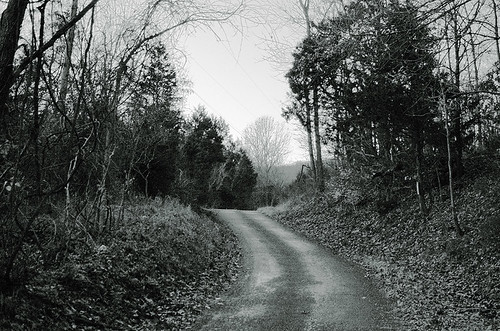
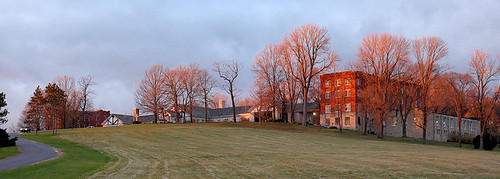
La Salle has been the home of the Christian Brothers since 1886. Until 1977, it served as the provincial Motherhouse with the house of formation and studies for young men discerning to become Christian Brothers. It also housed the Brothers on staff & faculty and a retired community of Brothers as well as the provincial offices. Since then, smaller communities of Christian Brothers have lived at La Salle and several Brothers now serve in the ministry of retreat work here.The retreat house has a beautiful hilltop site in the Ozarks, and is close to Rockwoods Reservation, a tiny steam railroad open to tourists, the Al Foster Trail, and a Marianist retreat house. The La Salle center is located near the Meramec River: click here for some of my photos taken nearby. Click here for a painting of this area, done in the Hudson River School style. Click here for a history of Glencoe.
The De La Salle Christian Brothers are a group of lay religious men devoted to education. They trace their beginnings to John Baptist De La Salle, a French priest, who established their society in 1680....
What sight is so rare as Glencoe in spring! Then the gay landscape is arrayed in virgin green, and from uplands to bottom lands flowers heavy with sunshine climb and descend, as bright a vision as Jacob's ladder of angels. And what charm to eye, ear, and nostril are wasted on earth and air! A wealth of promised glory blossoms forth in the orchard, swollen brooks rush and grumble, gorgeous spectacles of rosestrewn morning on dewy hilltops and of changeful evening glory bathing western heights put the mind into a golden doze. With blankest unconcern one stands a gaze, drinking in the beauteous display of one of the most charming scenes on God's earth. The mellow glory of fall's yellow afternoons, when the air is crisp and a golden haze hangs over hill and glen, also makes the heart leap up and life merry as the music of the sapless leaves. "October's holocaust" in Glencoe, "Burned gold and crimson over all the hills, the sacremental mystery of the woods," cannot be surpassed for regal richness anywhere else on this beautiful globe. Glencoe is a highland village, imposing in its share of tilled and wooded hills and valleys, decked with flowers and waiving harvests. It is a village of hills within hills. To one standing in the lowlands, the whole has the appearance of an immense amphitheatre, Again, so many eminences are here huddled together that one is curiously reminded from higher points of observation of a herd of mammoths. the scene is one of wild irregularity . Vain is the search of uniformity and likeness. No hill has a fellow in outline, slope or crest. It is the same with the narrow strips of valleys: There is no feature of family resemblance. All about is a mad riot of rugged grandeur and picturesque pell-mell, a happy disorder of craggy summits and rounded tops, of grassy knolls and rocky descents, of park like plateaus and jagged ledges. Here climbing the heights is the unconquerable oak, there beneath is the chill cave of mystery; here under a shelf of protecting rock is the den of wild beast, across the way, the impetuous creek hews a circuitous path over stony channels, Everywhere nature is gay with wildest grandeur. Glencoe is a miracle of repose. Brooks whisper in the voice of dreams and the moist scent of flowers and grass and leaves is wafted in a fragrant chorus. Such is the solemn stillness in this sanctuary of silence, and as the eyes feast on the tranquil landscape or gaze on the far-off horizon one is moved to speak, to commune with the Creator of all things. No one returns from a visit to Glencoe without being impressed that this is the place to take sanctuary from a world of spiritual assassins. It is choice out of ten-thousand for a Novitiate, Fitter spot the most fastidious fancy could not picture for the formation of those who would run in the ways of God and escape the small economies and blighting scandals of a grinding world, where strength is taxed to little purpose and where even rare spirits often lower to the level of their labours. How different it is at Glencoe. There the environment has the virtue to lift "a man to match his mountain, not to creep dwarfed and abased below it".
By the President of the United States of America. a Proclamation.— George Washington, first President of the United States. From the Papers of George Washington at the University of Virginia.
Whereas it is the duty of all Nations to acknowledge the providence of Almighty God, to obey his will, to be grateful for his benefits, and humbly to implore his protection and favor--and whereas both Houses of Congress have by their joint Committee requested me "to recommend to the People of the United States a day of public thanksgiving and prayer to be observed by acknowledging with grateful hearts the many signal favors of Almighty God especially by affording them an opportunity peaceably to establish a form of government for their safety and happiness."
Now therefore I do recommend and assign Thursday the 26th day of November next to be devoted by the People of these States to the service of that great and glorious Being, who is the beneficent Author of all the good that was, that is, or that will be--That we may then all unite in rendering unto him our sincere and humble thanks--for his kind care and protection of the People of this Country previous to their becoming a Nation--for the signal and manifold mercies, and the favorable interpositions of his Providence which we experienced in the course and conclusion of the late war--for the great degree of tranquillity, union, and plenty, which we have since enjoyed--for the peaceable and rational manner, in which we have been enabled to establish constitutions of government for our safety and happiness, and particularly the national One now lately instituted--for the civil and religious liberty with which we are blessed; and the means we have of acquiring and diffusing useful knowledge; and in general for all the great and various favors which he hath been pleased to confer upon us.
and also that we may then unite in most humbly offering our prayers and supplications to the great Lord and Ruler of Nations and beseech him to pardon our national and other transgressions--to enable us all, whether in public or private stations, to perform our several and relative duties properly and punctually--to render our national government a blessing to all the people, by constantly being a Government of wise, just, and constitutional laws, discreetly and faithfully executed and obeyed--to protect and guide all Sovereigns and Nations (especially such as have shewn kindness onto us) and to bless them with good government, peace, and concord--To promote the knowledge and practice of true religion and virtue, and the encrease of science among them and us--and generally to grant unto all Mankind such a degree of temporal prosperity as he alone knows to be best.
Given under my hand at the City of New-York the third day of October in the year of our Lord 1789.
Go: Washington
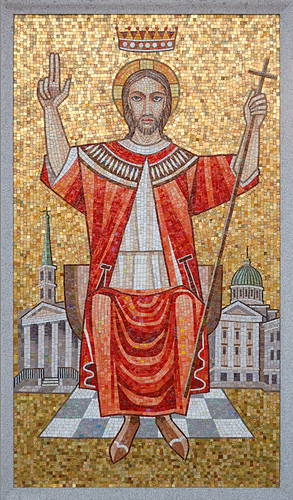
Lord of the ages evermore,This mosaic dates from 1974 and was made by the Ravenna Mosaic Company of Saint Louis, and is one of a series of outdoor mosaics located between two chapels in the cemetery.
Each nation's King, the wide world o'er,
O Christ, our only Judge thou art,
And Searcher of the mind and heart.
Through Sin with rebel voice maintain,
We will not have this Christ to reign,
Far other, Lord, shall be our cry,
Who hail thee King of kings most High.
O thou eternal Prince of peace,
Subdue man's pride, bid error cease,
Permit not sin to wax o'er-bold,
The strayed bring home within the fold.
For this thou hangedst on the Tree
With arms outstretched in loving plea;
For this thou shewedst forth thy Heart,
On fire with love, pierced by the dart.
And yet that wounded side sheds grace
Forth from the altar's holy place,
Where, veiled 'neath humblest bread and wine,
Abides for man the life divine.
Earth's noblest rulers to thee raise
Their homage due of public praise;
Teachers and judges thee confess;
Art, science, law, thy truth express.
Let kings be fain to dedicate
To thee the emblems of their state;
Rule thou each nation from above,
Rule o'er the people's homes in love.
All praise, King Jesu, be to thee,
The Lord of all in majesty;
Whom with the Father we adore,
And Holy Ghost for evermore. Amen.
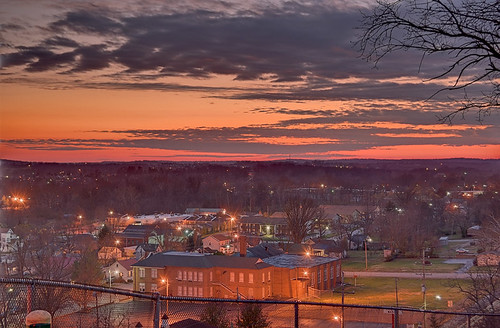
An unprecedented coalition of prominent Christian clergy, ministry leaders, and scholars has crafted a 4,700-word declaration addressing the sanctity of life, traditional marriage, and religious liberty. The declaration issues “a clarion call” to Christians to adhere to their convictions and informs civil authorities that the signers will not “under any circumstance” abandon their Christian consciences.See also: http://www.manhattandeclaration.org
The statement, called “the Manhattan Declaration,” has been signed by more than 125 Catholic, Evangelical Christian, and Orthodox leaders, and will be made fully public at a noon press conference in the National Press Club in Washington DC on Friday.
“We are Christians who have joined together across historic lines of ecclesial differences to affirm our right—and, more importantly, to embrace our obligation—to speak and act in defense of these truths. We pledge to each other, and to our fellow believers, that no power on earth, be it cultural or political, will intimidate us into silence or acquiescence,” the statement says...
"We will fully and ungrudgingly render to Caesar what is Caesar’s, but we will under no circumstances render to Caesar what is God’s."....
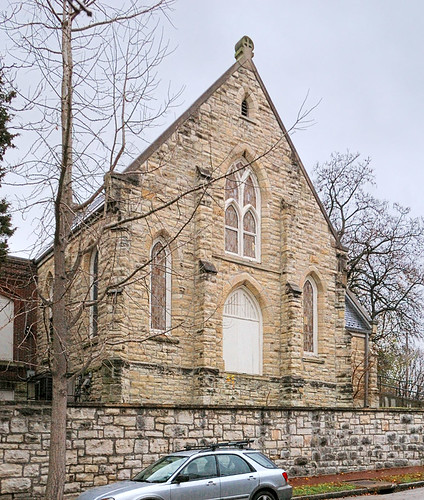
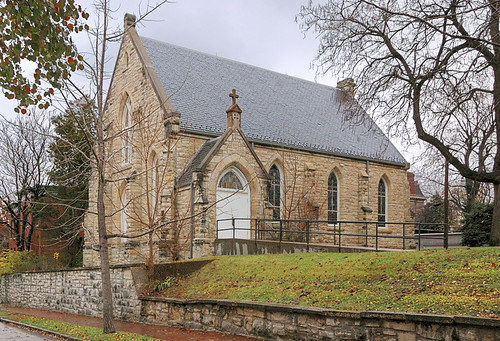
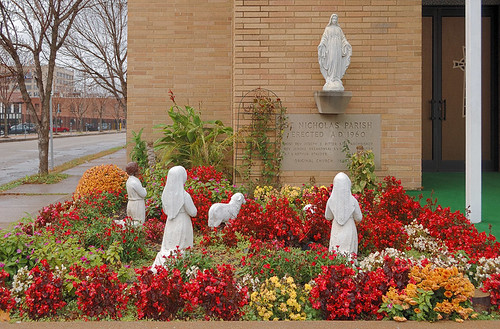
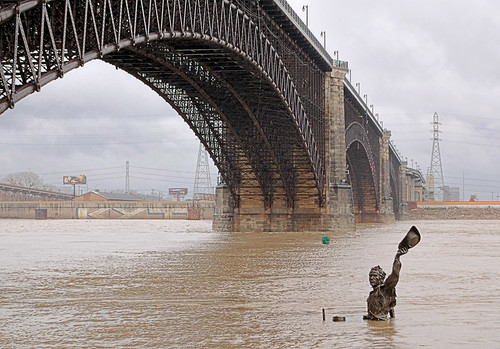
“The Gothic cathedral translates the aspirations of the soul into architectural lines, and is a synthesis between faith, art and beauty which still raises our hearts and minds to God today. When faith encounters art, in particular in the liturgy, a profound synthesis is created, making visible the Invisible, and the two great architectural styles of the Middle Ages demonstrate how beauty is a powerful means to draw us closer to the Mystery of God. May the Lord help us to rediscover that “way of beauty”, surely one of the best ways to know and to love Almighty God.”— Pope Benedict XVI, November 18th, 2009
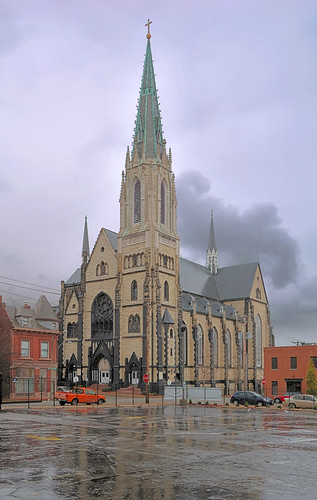
“Awesome is this place: it is the house of God, and the gate of heaven; and shall be called the court of God.”This is also the feast day of Saint Rose Philippine Duchesne, whose relics are entombed in nearby Saint Charles, Missouri. Click here for photos of the convent where she lived.


